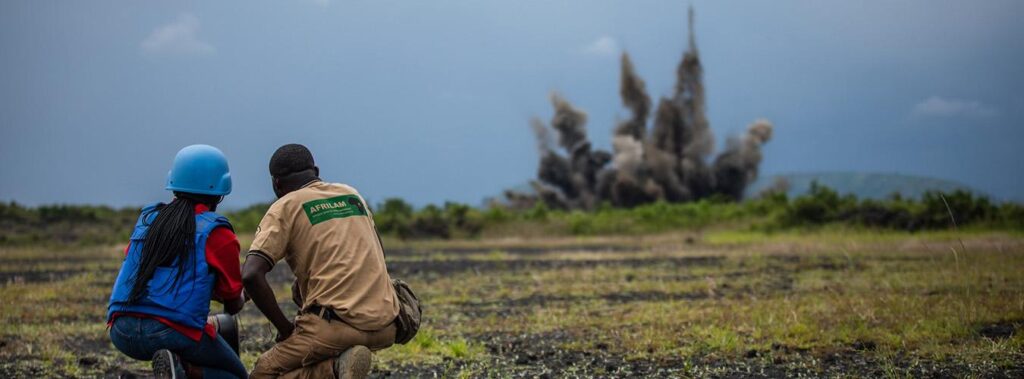International Day for Mine Awareness and Assistance in Mine Action

International Day for Mine Awareness and Assistance in Mine Action

-
This event has passed.
Event Details:
-
April 4 – April 4
-
About the Event:
Background
On 8 December 2005, the General Assembly declared that 4 April of each year shall be observed as the International Day for Mine Awareness and Assistance in Mine Action.
It called for continued efforts by States, with the assistance of the United Nations and relevant organizations, to foster the establishment and development of national mine-action capacities in countries where mines and explosive remnants of war constitute a serious threat to the safety, health and lives of the civilian population, or an impediment to social and economic development at the national and local levels.
For over 20 years, the work of the United Nations Mine Action Service (UNMAS) has been driven by the needs of affected people and tailored to the threat of explosive hazards faced by civilians, peacekeepers and humanitarians.
UNMAS works to save lives, to facilitate deployment of UN missions and the delivery of humanitarian assistance, to protect civilians, to support the voluntary return of the internally displaced and refugees, to enable humanitarian and recovery activities and to advocate for international humanitarian and human rights law.
History
The United Nations advocates for the universalization of existing legal frameworks and encourages Member States to expand those regimes and develop new international instruments to protect civilians from the scourges of landmines and explosive remnants of war. It undertakes this work in collaboration with interested states, civil society, mine action and international organizations.
Since the Convention on the Prohibition of the Use, Stockpiling, Production and Transfer of Anti-Personnel Mines and on Their Destruction, commonly known as the Anti-Personnel Mine Ban Convention opened for signature in 1997, 164 countries have ratified or acceded to it.
In addition to anti-personnel mines, challenges remain with respect to all other explosive remnants of war. On 12 November 2006, the Secretary-General welcomed the entry into force of Protocol V on explosive remnants of war from the Convention on Certain Conventional Weapons and reiterated his call for its universalization and implementation. In December 2008, the Secretary-General welcomed the opening for signature of the Convention on Cluster Munitions, which was joined by 108 states.
Guided by its inter-agency policy, the United Nations Inter-Agency Coordination Group on Mine Action (IACG-MA), consisting of 12 departments, agencies, funds and programmes, and with observer entities, such as the United Nations Institute for Disarmament Research and World Bank continue to ensure system-wide coherence in all mine action pillars and activities.
In 2018 UNMAS convened, coordinated and led the drafting of the United Nations Mine Action Strategy 2019-2023. Two of the most significant aspects of the Strategy are that it represents an accountability framework for the United Nations system and introduces a Theory of Change for the United Nations engagement in mine action.
Mine Action Cannot Wait
In 2023 the United Nations Mine Action Service will acknowledge the day under the campaign “Mine Action Cannot Wait”, highlighting decades of contamination in Cambodia, the Lao People’s Democratic Republic and Viet Nam, as well as draw attention to recent explosive ordnance contamination.
The over-arching goal will be to bring attention to areas of the world that remain contaminated after many years, and where generations have changed their lives to avoid the threat.
Explosive ordnance contamination threatens lives, curtails freedom of movement, limits access to arable land, disenfranchises communities and above all instills fear and insecurity. It spreads terror, and longstanding contamination internalizes this terror. The most affected are the most vulnerable populations.
This campaign makes it clear that the eradication of all landmines cannot wait. Whether it is new contamination in Colombia, Myanmar, Ukraine or Yemen, or old contamination, in Cambodia, Iraq or Viet Nam, clearance must be completed by mine action actors and States Parties of the Mine Ban Convention. It is a human problem.

